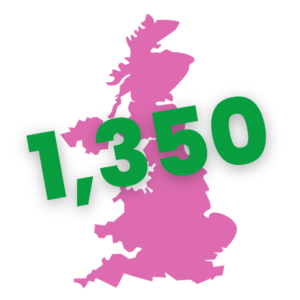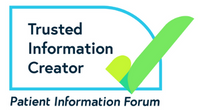Spinal Muscular Atrophy (SMA) – A Brief Summary
Spinal Muscular Atrophy (SMA) – A Brief Summary
Who this is for
This information is for anyone who wants a brief summary of the impact of SMA, what causes the condition, the numbers of people affected and possible treatments.
Spinal Muscular Atrophy is a rare, neuromuscular condition. It causes progressive muscle wasting and weakness. It may affect crawling and walking ability, arm, hand, head and neck movement, breathing and swallowing. How severely people are affected, and in what way, varies greatly.
These describe the age symptoms start to show and the motor milestones (e.g. the ability to sit, stand and walk) that a child or adult would be expected to achieve. They are used by doctors when a child or adult presents with symptoms and tests confirm a diagnosis of SMA.
| SMA Type | Age symptoms usually begin | Motor milestones |
|---|---|---|
| Type 1 | 0-6 months | Unable to sit or roll independently |
| Type 2 | 7-18 months | Able to sit but not walk independently |
| Type 3 | 18 months – 18 years | Able to walk though may lose this ability over time |
| Type 4 | 18 years + | Mild walking difficulties |
However, how severe and what impact SMA has varies from person to person, both within and between ‘Types’. Each child and adult is affected differently.
Most people have two genes called the Survival Motor Neuron 1 (SMN1) gene. This produces Survival Motor Neuron (SMN) protein which keeps lower motor neuron nerve cells healthy. These are essential for activating muscles used for crawling and walking, the movement of arms, hands, head and neck, as well as breathing and swallowing.
Most people have two healthy copies of the SMN1 gene. People who have 5q SMA have two ‘altered’ copies of the SMN1 gene. This means they are unable to produce enough SMN protein to have healthy lower motor neurons.
A second gene also produces SMN protein. This is the SMN2 gene. It is sometimes referred to as the SMA ‘back-up’ gene. Although this gene makes some functional SMN protein, it cannot fully make up for the altered SMN1 genes in people who have 5q SMA.
People can have between 0 – 8 copies of the SMN2 gene (SMN2 copy numbers). Having more SMN2 copies is generally associated with less severe SMA symptoms. However, the SMN2 copy number alone cannot accurately predict the Type of 5q SMA or the severity of its impact.
-
 Every month in the UK, 4 babies are born with 5q SMA.
Every month in the UK, 4 babies are born with 5q SMA.
5q SMA affects an estimated 1 in 14,000 births. In 2022, this would have been around 48 babies in the UK who were born with 5q SMA, of which some 60% (29 babies) would have the more severe SMA Type 1.
-
 In mid-2022 there were up to an estimated 1,350 people living with 5q SMA in the UK.
In mid-2022 there were up to an estimated 1,350 people living with 5q SMA in the UK.
As there is no central source of information, exact numbers are unknown. Worldwide between 1 and 2 people in every 100,000 worldwide have 5q SMA.
-
 Although SMA is a rare condition, an estimated 1 in 40 people carry the altered gene. That’s around 1.69 million people in the UK.
Although SMA is a rare condition, an estimated 1 in 40 people carry the altered gene. That’s around 1.69 million people in the UK.
When two ‘carriers’ of the altered gene have a child, for each and every pregnancy there is a one in four chance that the child will have SMA.
There is no cure for SMA and until late 2019 there were no NHS-approved drug treatments specifically for SMA in the UK. There are now three NHS-funded drug treatments:

These treatments are not always suitable for everyone who has 5q SMA, but most people who have SMA Type 1, 2 or 3 can receive one of them.
These drugs and better care and management of the condition can change what motor milestones (e.g. the ability to sit, stand and walk) babies and children may be able to achieve, and improve their general health. The treatments work best if started before there is any muscle weakness, or when this is minimal. It is therefore important for treatment to be started as soon as possible. This is why clinicians and patient groups are calling for the earliest possible introduction of Newborn Screening for SMA in the UK.
For adults living with SMA, drug treatment that can stabilise the condition later in life may also make a positive difference – for example, helping with fatigue or preventing the loss of the ability to use a finger to control a powerchair or laptop.
Much more is known about 5q SMA than the other very rare forms of SMA which have different genetic causes and inheritance patterns. For information about these conditions, including what is known about their symptoms and causes, please see Rarer Forms of SMA.
 Version 6
Version 6
Author: SMA UK Information Production Team
Last updated: April 2024
Next full review due: September 2024
Links last checked: November 2023
The information provided in this guide, on our website, and through links to other websites, is designed to complement not be a substitute for clinical and professional care and advice.
For more detail about how we produce our information, please see these pages.
If you have any feedback about this information, please do let us know at: information@smauk.org.uk